
Providing the ultimate customer experience is a goal all software developers strive for.
All their work, talent, and resources are ultimately used to create a product in which users can find value.
It’s no wonder that companies are careful about what they release to the public and thoroughly test their products.
Among many types of tests you can use, beta testing stands out. Why? Because it provides you with the customers’ point of view.
In this article, we’ll examine why beta testing is crucial and how it can benefit the company, the product’s quality, and the customers themselves.
Table of Contents
Uncovering hidden bugs in the product
Most software development companies thoroughly test their products before releasing them to the public.
After all, why should they risk their reputation and user satisfaction by releasing a bug-ridden product?
However, some bugs will often stay undetected despite all the quality assurance and internal testing.
That’s where beta testing shines.
Michalina Drozd from Gorrion Software House explains why beta testing is so vital:
These tests are crucial since a team that works on a project focuses more on going through a project with so-called “happy paths” and, therefore, don’t find some of the bugs.

Get unreal data to fix real issues in your app & web.
In other words, beta testers interact with your product in ways you might not even think of.
It’s an additional layer of security that ensures the hidden bugs will be discovered before they get the chance to ruin the user experience.
And you shouldn’t underestimate the importance of eliminating as many bugs as possible before releasing a product.
According to a survey by QualiTest Group, 88% of users would abandon an app because of its bugs.
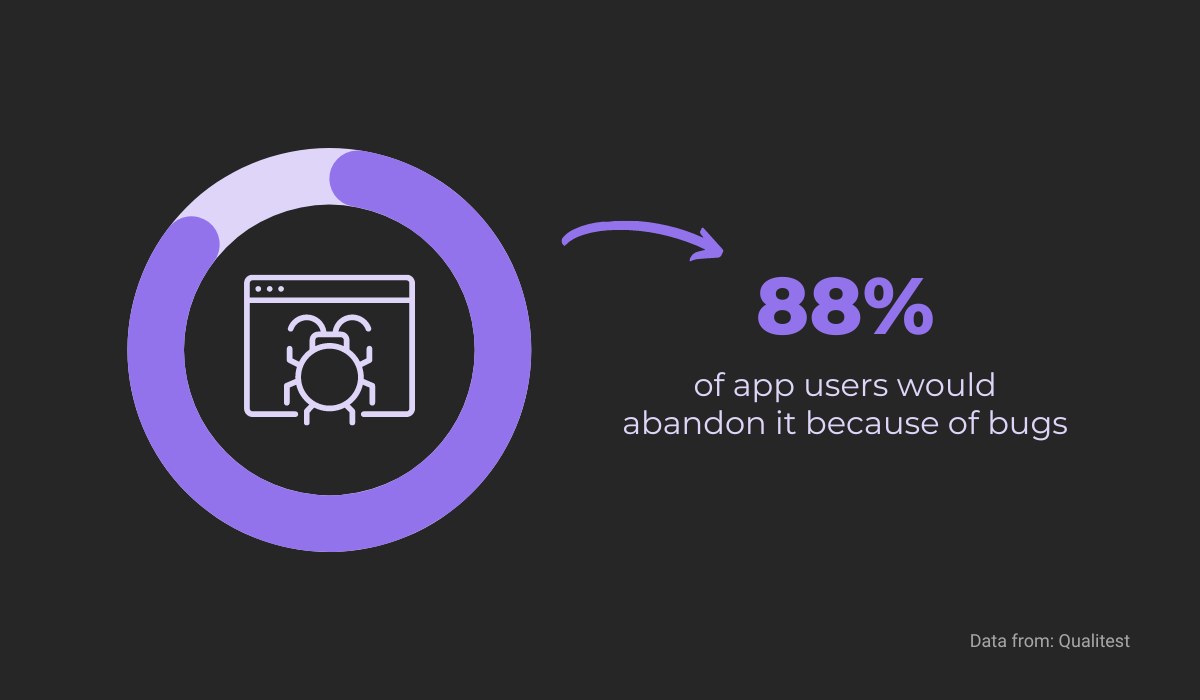
Beta testers are also valuable because they are prepared for possible bugs while using your product.
As Michael Siegler, founder of BetaTesting, explains, beta testers are aware that the product is in the evolving phase and won’t hold the occurrence of bugs against you.

However, beta testing shouldn’t be a one-time occurrence in the product life cycle.
More bugs will creep in as you change and update your software product, add features, write new code, etc. As you already know, that’s the nature of software development.
In other words, even if you find every bug in the first version of your product, that doesn’t mean they won’t reappear in the next iteration.
That’s why beta testers can be immensely helpful in uncovering hidden bugs in every version of your product.
Testing the product in a real environment
Software products go through detailed testing in various phases of their development cycle.
The tests are carried out inside the company by experts who know what to look for and how to ensure that the product works properly.
However, that still isn’t a guarantee that the product will work flawlessly once it gets into the hands of the customers.
How can that be if all the in-house tests went well?
How can a customer have an experience like the one below with an app from one of the world’s biggest companies?
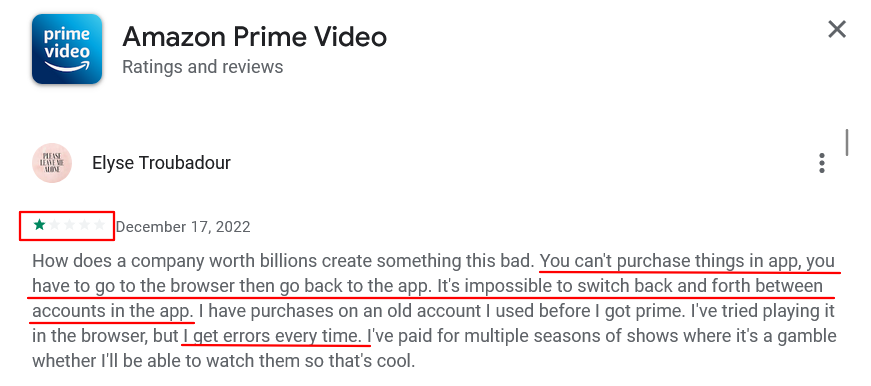
It’s simple. You can design dozens of tests with hundreds of variables, but you can’t predict every possible condition the product can encounter outside that controlled testing environment.
For instance, your app might be stable in all of the tests.
Still, it can repeatedly crash when the customer tries to start it because they have a particular version of OS on their device or a specific combination of background processes that causes it to crash.
Beta testing can be a cure for that because the product is tested in environments you can’t always replicate.
All the different environments, devices, browsers, locations, and every other variable you can get by giving your product to beta testers are another priceless benefit of this type of testing.
Tanvir Bhangoo, author and Forbes contributor, puts it like this:

Keep in mind, however, that beta testers should still represent the audience for your product.
In other words, beta testing is at its most efficient when the testing involves people who are usually interested in that type of product.
The point is that a real environment doesn’t necessarily mean only an environment outside your company’s testing lab.
It can also mean an environment that’s natural for your product. Having a broad demographic to test the product is important, but you should still look for beta testers with similar goals as yours.
That will create a realistic environment for testing the product—the one your product will end up in when you release it to the public.
Getting feedback from real users
Direct feedback that you can get from beta testers can be a game changer for the quality of your software product.
You might think that you and your team made a perfect product, but you don’t develop software products for yourself.
You do it for the customers, and their opinion matters the most for the product’s success.
That’s why Lauren Detweiler, SaaS copywriter and content strategist, thinks that beta testing is essential for software products.

Therefore, getting feedback from beta testers who use your product in a real environment, who check the usability, security, speed, and many other elements that contribute to their experience, should shape how you develop your product further.
Listening to their opinions can significantly impact how well your product performs on the market.
They might point out specific issues, suggest improvements, give you ideas for new features, etc. In short, feedback can make your product better.
That’s why you should make it as easy as possible for your beta testers to provide feedback.
Ilia Sotnikov, an experienced product management and user experience leader, has some ideas on how to do that.
Make the process of submitting feedback easy and transparent. Use an in-app feedback mechanism or schedule regular calls.
By using Shake, that process is fast and straightforward.
Shake is a bug and crash reporting tool that allows beta testers to send a complete report of the issue with all the relevant data by just shaking their phone, without leaving the app.

The important thing is to make sure that submitting feedback is as simple as possible.
You don’t want to test the patience of your beta testers by making them jump through hoops just to give you their opinion on your product.
Keep in mind that they’re the ones doing you a favor, so keep it simple for them.
A feedback survey with multiple-choice questions, like the one below from Typeform, is another excellent way to do that.
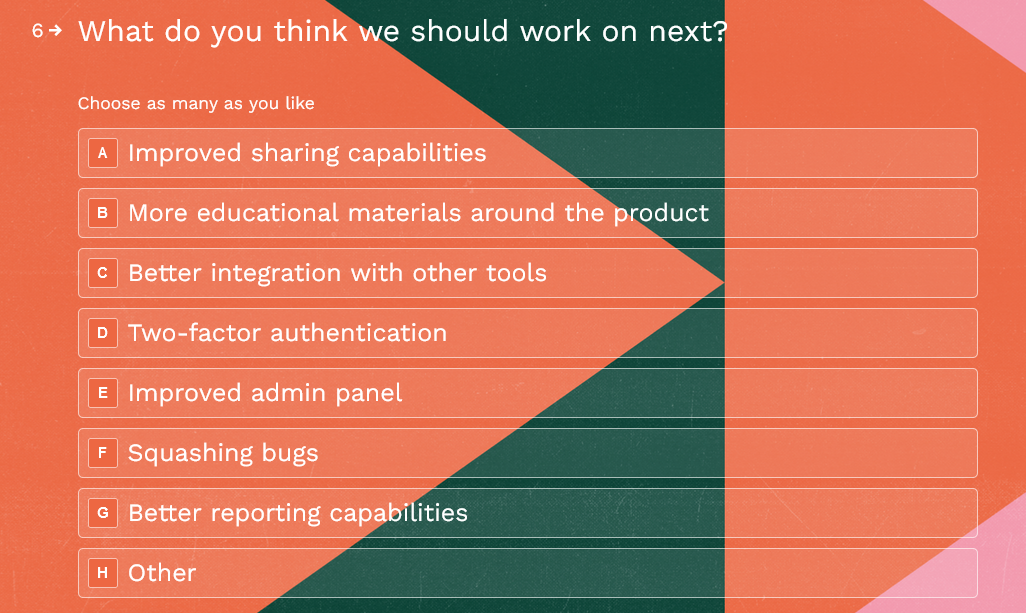
Whether you choose a survey, a bug reporting tool, or some other feedback form, it’s important to gather both quantitative and qualitative data from your users.
That way, you can form a complete picture of the state of your product and improve it from there.
Encouraging testers to spread the word
One of the benefits you can reap if you give your product to beta testers is a strong possibility of creating a positive buzz about it before it’s even released to the public.
First of all, when you choose a group of testers, you give them exclusive access to the product.
They know that they can access and use something the general public can’t, creating a sense of privilege and a feeling that you care for them as users.
Assuming that you have a quality product that meets their needs, your beta testers will likely become your customers when the product is ready for market.
And secondly, those testers will most likely spread the word about your product to their friends, family, or anyone using social media—and that’s a lot of potential customers.
According to data from Podium, people trust opinions they see online and often base their purchasing decisions on them.
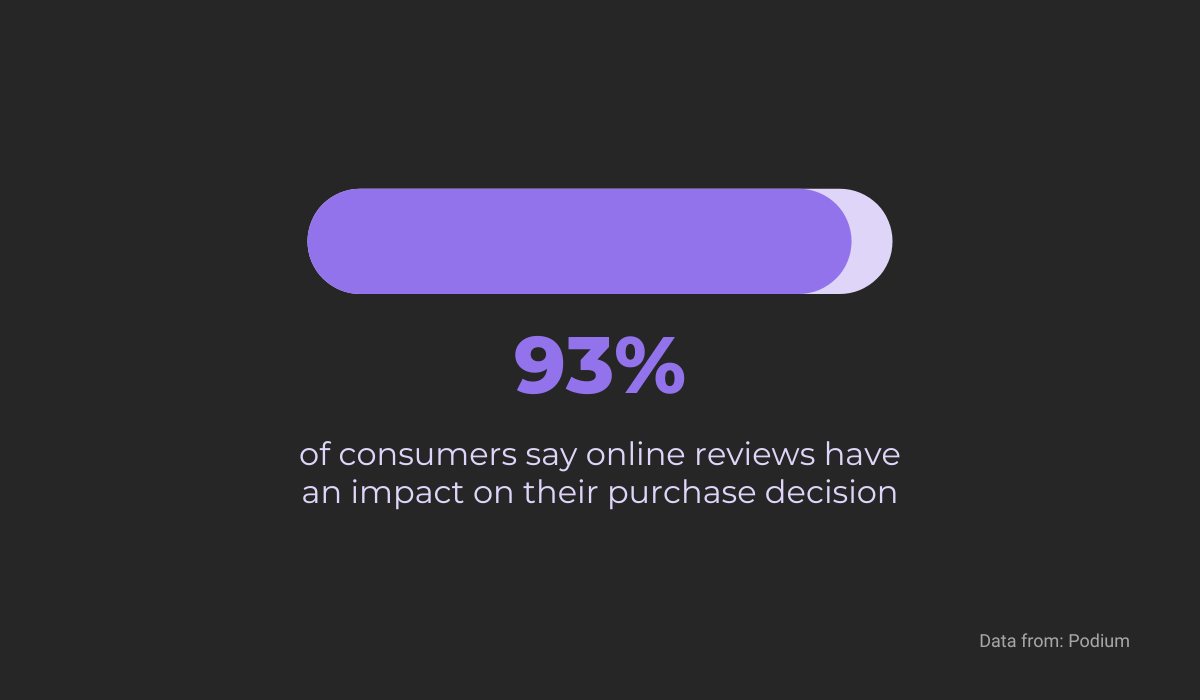
Therefore, your beta testers can be a source of free marketing.
And since they know that they’re testers for a product that may still have some issues to iron out, that you care for their opinion, and that you have given them exclusive access to a new product, there’s a high chance that they won’t bash it online.
For example, the review for Chrome Beta on Google Play you see below is mostly positive, and the reviewer gave the app four out of five stars.

Take a look at how many people found the review helpful. It’s a significant number, and still much lower than the number of people who only read the review.
The point is that beta testers can reach many people with their opinions and turn some of them into your customers.
Social media also plays an important role in that. For example, this Twitter user is a senior software engineer with almost 7000 followers.
A simple recommendation for a software product from someone knowledgeable and influential like him can be a valuable free advertisement.

To sum up, if you build a great software product, why shouldn’t you take advantage of the possibility of some free marketing?
Beta testers can spread the word about the product and kickstart the creation of your customer base.
Saving on costs in the long term
Beta testing isn’t free, there’s no way around it.
You need to secure the resources for tools like bug tracking and reporting software, finding your beta testers, whether through marketing or offering incentives, and you should account for the time spent on testing.
Those are only some of the possible costs you should be prepared for. However, beta testing can save you money in the long run.
How? For starters, as we mentioned earlier, beta testing can uncover bugs and issues that could blow out of proportion if not fixed early.
Sure, you can fix problems after you release your product to the public, but that can be much more expensive than dealing with them early.
According to one study by IBM, fixing problems after release can be up to 15 times costlier.
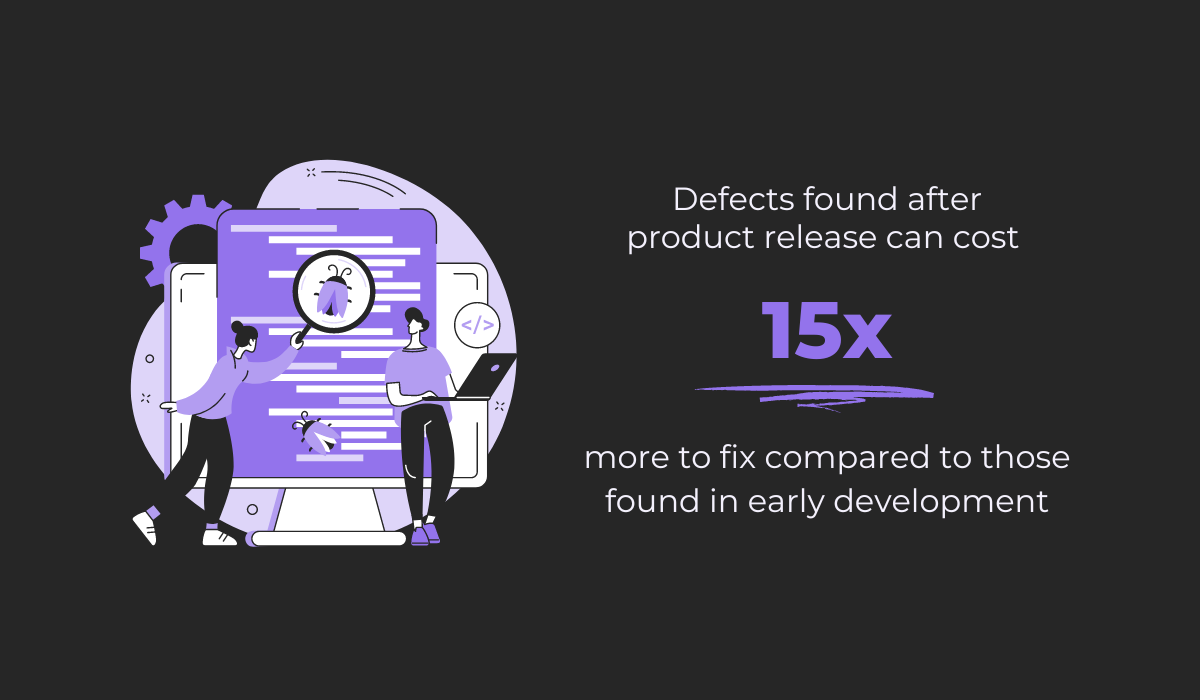
Furthermore, saving on costs can be the difference between a successful company and a bankrupt one.
That’s especially true if the company is young and trying to establish itself in the market.
For example, according to CB Insights, the top reason why startups fail is that they run out of cash or don’t raise enough new capital.
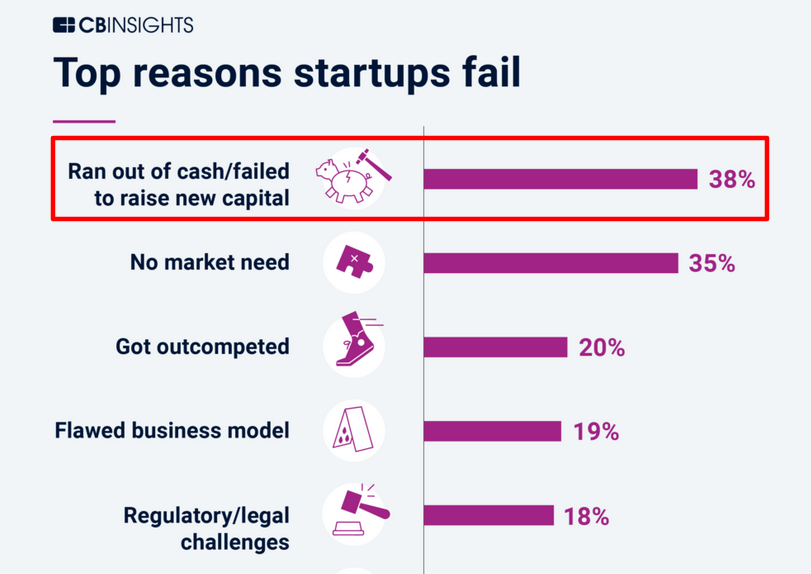
Even if your company isn’t a startup, this data clearly shows how vital it can be to save on costs every chance you get.
Beta testing can certainly help with that. It allows you to release your product to a limited number of people, controlling initial deployment costs.
Also, their feedback can help you make a better product before you put it on the market, saving you the money you would need to spend on post-production updates.
And a better quality product is bound to attract more customers.
As John Egan, former Pinterest’s head of growth engineering, explains, you don’t have much time to demonstrate value to customers.
When someone downloads your app, you have a couple of minutes to convince them that this is something they need to use on a regular basis.
In summation, beta testing can save you a lot of valuable resources.
If you practice it, it’s more likely that you’ll catch costly errors in time, release a better product, and attract more users. All of that can be essential to the success of your company.
Conclusion
Beta testing is an essential part of the software development industry.
That’s beyond any doubt—the user is at the center of the software development industry, and beta testing is a way to learn more about how they react to the product.
As we’ve shown in this article, beta testing has numerous benefits.
Finding stubborn bugs, testing the product in its natural environment, getting valuable feedback, spreading the word about the product, and saving costs are some of the most important ones.
If you’re not already performing beta testing, now is the time.





